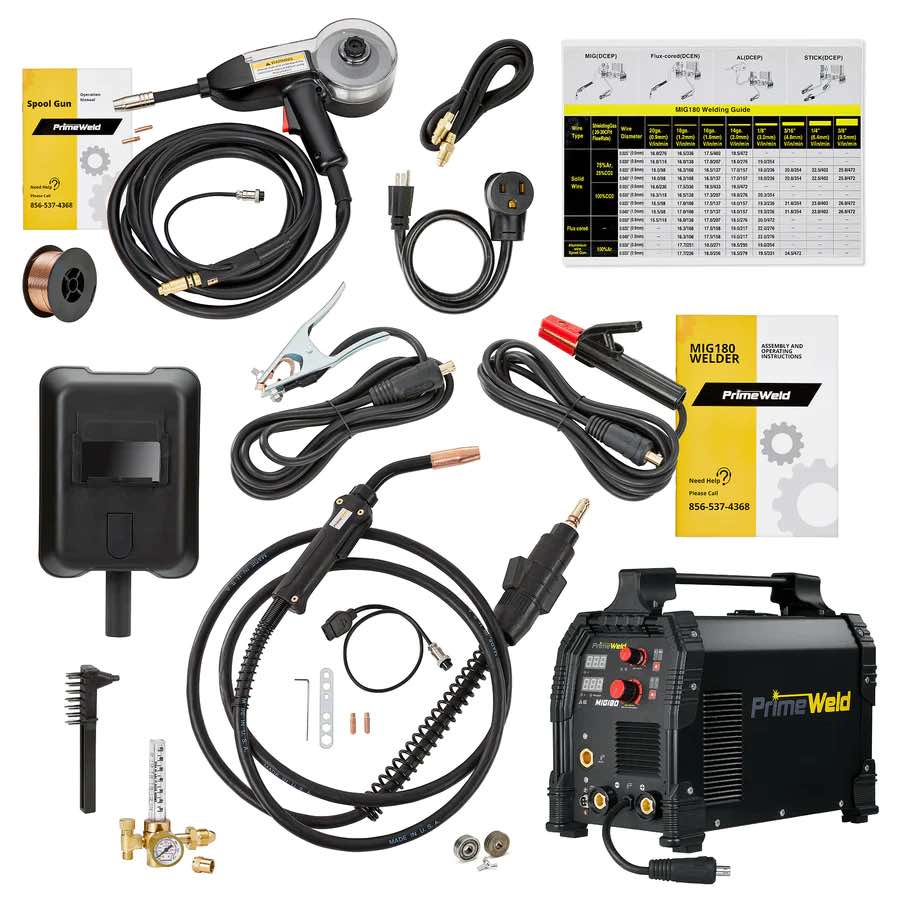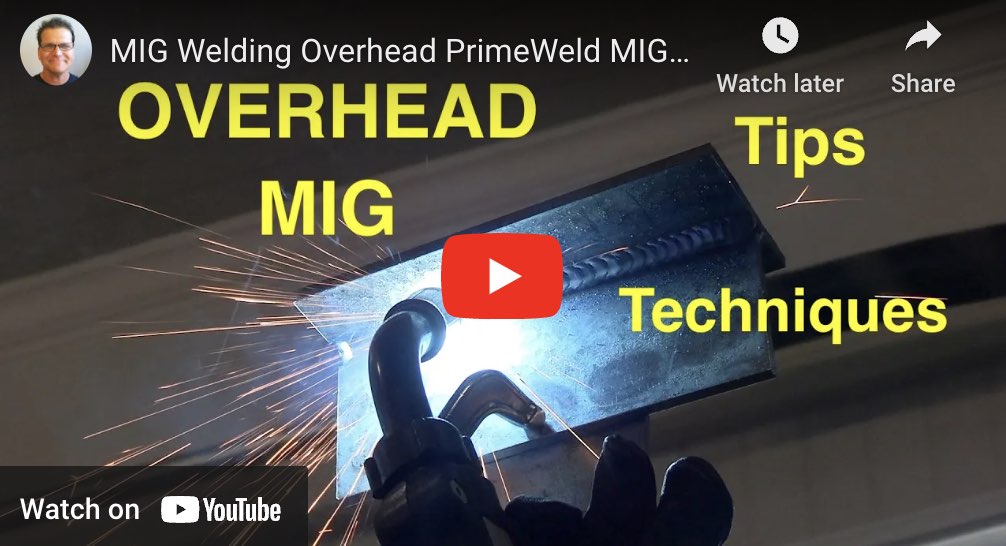Miller short arc Mig Settings - A video and Explanation
primeweld mig 180 plugged into 115 volt power
Mig welding overhead with a primeweld mig 180
Mig Welding vertical Uphill settings
Miller Short circuit Mig settings, Short circuit MIG Welding Principles, procedures, and techniques for using miller mig machines.
Miller Electrics mig machines are great machines.
One of the great features is the weld settings chart that is located on the inside of the cover that protects the wire feeding hardware.
You can bet the Miller Electric went to great pains to determine good settings for their mig machines because they obviously want a good user experience and fewer customer complaints.
So do yourself a favor and start off with voltage and wire feed settings that are listed on the chart.
But be careful. This chart has all kinds of settings for using different shielding gases, different metals, and different size and types of welding wires.
for example, if you are using .035" E70s6 bare wire on 1/4" mild steel and using 75/25 argon/co2 gas, make sure you are not looking at the straight Co2 settings. Settings vary greatly between different gases and the weld just wont come out right if you use C02 settings for argon/co2 gas applications.
One more thing you need to be aware of is that the settings on the millermatic mig machines are assuming that the weld is in the flat position. Vertical uphill welds do not take as much voltage or wire feed speed as flat welds so you need to pick a setting that is recommended for thinner material to make a vertical uphill weld work.
For example if you are welding 3/8" thick metal uphill, you might choose the settings for 1/4" thick metal.
Before you begin any weld, the metal needs to be clean enough. What I mean by clean enough is cleaned well enough for the application. If you are making x ray quality welds or trying to pass a guided bend test, you probably want the metal completely free from mill scale or any other possible contaminant like paint , oil, or coating.
But if you are just doing general fabrication, Welding over the light mill scale on square tubing is not that big of a deal for 3/16" and under thickness.
Shielding gas flow is another consideration. More is not necessarily better. Kind of like taking aspirin for a headache. Just because 2 are good, does not mean 5 is better.... usually 20-30 cfh is in the ball park, but it all depends on the application and the diameter of the nozzle. If you get porosity and your gas flow is on the low side, turn it up.
The ground clamp is subject for a whole lot of discussion but here is the bottom line. You need a really good ground for any type of mig welding. Have you ever heard someone pull the trigger on a mig gun and it sounds like a drive by shooting before the arc finally stabilizes?
It's the ground clamp. Ground clamps for most mig welders suck and you mig machine is like the devil, It does not care about you our whether you have a ground or not... it just keeps on feeding wire making you look stupid.
Miller must recognize this because they developed a mac daddy ground clamp with copper teeth and a shunt to improve welding of their machines.
Getting comfortable and using both hands are really important. You will not be consistent without doing both.
Gun angle is important but often overstated. Should you push?,,,should you pull? Oh Please!! sometimes you have to use whatever gun angle that gets the job done. When in doubt try dead nuts straight in with no angle and adjust from there. I promise, you cant go wrong.
Stick out is the distance the wire sticks out between the end of the contact tip and the arc and is very very very very important. For thicker metal, it makes all the difference to keep the stick out short. With a long stick out , electrical resistance heats up the wire and makes the arc wimpy and makes the weld look like Fidos butt.






















